 |
King of Chemicals Manufacturers |
Specifications, Properties, Uses, SDS of Barium Sulfate or Barium Sulphate USP BP Ph Eur IP JP EP Grade Manufacturer Supplier Exporter Wholesale & Small Packs, CAS Number 7727-43-7. |
|
| King of Chemicals has several associated companies having accreditations like cGMP, GLP - FDA Approved Good Manufacturing Practice and Good Laboratory Practice of WHO standard, ISO-9001, ISO-14001, ISO/IEC 17025, ISO ISO-45000, HACCP, FSSC 220000, FSSAI, "REACH" Registered, Kosher & Halal Certified. e-CTD and DMF support can be made available if needed. We offer USP NF BP Ph Eur EP IP JP Analytical Reagent FCC Food Grade Chemicals & Nutraceuticals. | |
        |
|
Muby Chem Pvt. Ltd. is a several decades old group of companies, engaged in manufacturing, supplying, distributing, wholesale supplies of Barium Sulfate or Barium Sulphate USP BP Ph Eur IP JP EP Grade for actual users, including retail or small pack supplies for research and development work.
We supply fine and speciality chemicals, pharmaceutical excipients, mineral fortifiers in chemically pure, analytical reagent grade, IP BP USP Ph Eur EP JP and other pharmaceutical grade monograph including FCC Food grade chemicals and Nutraceuticals at best prices. We and/or our associated units have all the facilities to supply as per cGMP standard observing good manufacturing practice and good laboratory practice. We can assure low microbial count and also offer a test certificate for the same. We maintain warehouses across USA, India, and UAE. Our group exports to USA, Canada, Mexico, Argentina, Brazil, Chile, Korea, Malaysia, Thailand, Indonesia, Europe, and several other parts of the world. We supply in wholesale container loads to small pack of few grams. Solid products may be specified for it size and shape as desired by the buyer.
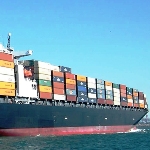
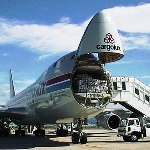
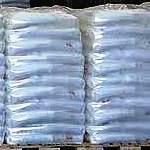
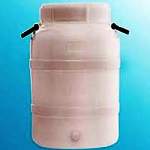
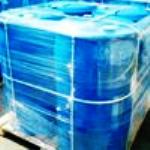
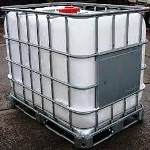
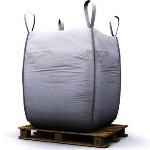
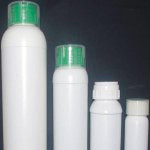

Barium Sulfate or Barium Sulphate USP BP Ph Eur IP JP EP Grade CAS Number 7727-43-7
For Properties Specifications Uses of Barium Sulfate or Barium SulphateClick Properties, Specifications, Uses, Price, Process of Barium Sulfate or Barium Sulphate.
For For SDS MSDS Sheet of Barium Sulfate or Barium Sulphate Click SDS Safety Data Sheet MSDS Sheet of Barium Sulfate or Barium Sulphate.
The Properties, Specifications, Monograph and Uses of Barium Sulfate or Barium Sulphate:
Barium Sulfate USP Grade Specifications
BaSO4 233.39
Sulfuric acid, barium salt (1:1) --- CAS 7727-43-7
Barium Sulfate contains not less than 97.5 percent and not more than 100.5 percent of BaSO4.
Identification:
A: Mix 0.5 g with 2 g each of anhydrous sodium carbonate and anhydrous potassium carbonate, heat the mixture in a crucible until fusion is complete, treat the resulting fused mass with hot water and filter: the filtrate, acidified with hydrochloric acid, meets the requirements of the tests for Sulfate.
B: Dissolve a portion of the well-washed residue from Identification test A in 6 N acetic acid: the solution meets the requirements of the tests for Barium.
pH: between 3.5 and 10.0, in a 10% (w/w) aqueous suspension.
Heavy metals: Boil 4.0 g with a mixture of 2 mL of glacial acetic acid and 48 mL of water for 10 minutes. Dilute with water to 50 mL, filter, and use 25 mL of the filtrate: the limit is 0.001%.
Limit of sulfide: To 10 g in a 500-mL conical flask add 100 mL of 0.3 N hydrochloric acid. Cover the mouth of the flask with a circle of filter paper that has been moistened at the area over the mouth of the flask with 0.15 mL of lead acetate TS, the paper being held in place with a string tied around the neck of the flask. Boil the mixture gently for 10 minutes, taking care to avoid spattering the paper. Any darkening of the paper is not greater than that produced by a similarly treated control consisting of 100 mL of 0.3 N hydrochloric acid containing 5 :g of sulfide: not more than 0.5µg per g is found.
Limit of acid-soluble substances: Cool the mixture obtained in the test for Limit of sulfide, add water to restore approximately the original volume, and filter it through paper that previously has been washed with a mixture of 10 mL of 3 N hydrochloric acid and 90 mL of water, returning the first portions, if necessary, to obtain a clear filtrate. Evaporate 50 mL of the filtrate on a steam bath to dryness, and add 2 drops of hydrochloric acid and 10 mL of hot water. Filter again through acid washed paper, prepared as directed above, wash the filter with 10 mL of hot water, and evaporate the combined filtrate and washings in a tarred dish on a steam bath to dryness. The residue, when dried at 105 for 1 hour, weighs not more than 15 mg: not more than 0.3% of acid-soluble substances is found.
Limit of soluble Barium salts: Treat the residue obtained in the test for Limit of acid-soluble substances with 10 mL of water, pass the solution through a filter previously washed with 100 mL of 0.3 N hydrochloric acid, and add 0.5 mL of 2 N sulfuric acid. Any turbidity formed within 30 minutes is not greater than that produced in a similarly treated control consisting of 10 mL of water containing 0.5 mL of 2 N sulfuric acid and 50 :g of barium: not more than 0.001% of soluble barium salts is found.
Barium Sulphate BP Ph Eur Grade Specifications
BaSO4 --- 233.4 --- CAS 7727-43-7
CHARACTERS
Appearance: Fine, white or almost white powder, free from gritty particles.
Solubility: Practically insoluble in water and in organic solvents. It is very slightly soluble in acids and in solutions of alkali hydroxides.
IDENTIFICATION
A. Boil a suspension of 0.2 g with 5 ml of a 500 g/l solution of sodium carbonate for 5 min, add 10 ml of water, filter and acidify a part of the filtrate with dilute hydrochloric acid. The solution gives the reactions of sulphates.
B. Wash the residue collected in the preceding test with 3 successive small quantities of water. To the residue add 5 ml of dilute hydrochloric acid, filter and add to the filtrate 0.3 ml of dilute sulphuric acid. A white precipitate is formed that is insoluble in dilute sodium hydroxide solution.
TESTS
Solution S: To 20.0 g add 40 ml of distilled water and 60 ml of dilute acetic acid. Boil for 5 min, filter and dilute the cooled filtrate to 100 ml with distilled water.
Acidity or alkalinity: Heat 5.0 g with 20 ml of carbon dioxide-free water on a water-bath for 5 min and filter. To 10 ml of the filtrate add 0.05 ml of bromothymol blue solution. Not more than 0.5 ml of 0.01 M hydrochloric acid or 0.01 M sodium hydroxide is required to change the colour of the indicator.
Acid-soluble substances: Maximum 0.3 per cent.
Oxidizable sulphur compounds: Shake 1.0 g with 5 ml of water for 30 s and filter. To the filtrate add 0.1 ml of starch solution, dissolve 0.1 g of potassium iodide in the mixture, add 1.0 ml of a freshly prepared 3.6 mg/l solution of potassium iodate and 1 ml of 1 M hydrochloric acid and shake well. The colour of the solution is more intense than that of standard prepared at the same time and in the same manner, but omitting the potassium iodate.
Soluble Barium salts: Maximum 10 ppm.
Heavy metals: Maximum 10 ppm.
Loss on ignition: Maximum 2.0 per cent, determined on 1.0 g at 600 ± 50 C.
Barium Sulfate or Barium Sulphate is also offered as per IP JP EP Grade Monograph.
The MSDS-SDS Hazard Statement of Barium Sulfate or Barium Sulphate:
Barium Sulfate SDS, Safety Data Sheet
MSDS Sheet, Material Safety Data Sheet 21-Mar-25
1. Product Identification
Product Name & Other Names: Barium Sulfate or Sulfuric acid, barium salt or Barytes or Blanc fixed or Barite.
CAS No.: 7727-43-7
EINECS EC Number: 231-784-4
Recommended usage: Industrial Manufacturing.
Suppliers: As per letterhead.
2. Hazards Identification
GHS, Globally Harmonized System Classification in accordance with 29 CFR 1910
Classification according to Regulation (EC) No 1272/2008
Not a hazardous substance or mixture according to Regulation (EC) No. 1272/2008.
This substance is not classified as dangerous according to Directive 67/548/EEC.
Labeling according to GHS & Regulation (EC) No 1272/2008
GHS Label Elements NONE |
Signal Word: None
Precautionary statements:
P261: Avoid breathing dust/fume/gas/mist/vapors/spray.
P262: Do not get in eyes, on skin, or on clothing.
P281: Use personal protective equipment as required.
P302+P352: IF ON SKIN: Wash with plenty of soap and water.
P304+P340: IF INHALED: Remove victim to fresh air and keep at rest in a position comfortable for breathing.
P305+P351+P338: IF IN EYES: Rinse cautiously with water for several minutes. Remove contact lenses, if present and easy to do. Continue rinsing.
P337+313: If eye irritation persists get medical advice/attention.
3. Composition/Information on Ingredients
Product Name & Other Names: Barium Sulfate or Sulfuric acid, barium salt or Barytes or Blanc fixed or Barite.
CAS No.: 7727-43-7
EINECS EC Number: 231-784-4
4. First Aid Measures
Inhalation: Remove to fresh air. Get medical attention for any breathing difficulty.
Ingestion: Do NOT induce vomiting unless directed to do so by medical personnel. Never give anything by mouth to an unconscious person. If large quantities of this material are swallowed, call a physician immediately. Loosen tight clothing such as a collar, tie, belt, or waistband. Give several glasses of water to drink to dilute.
Skin Contact: Wash exposed area with soap and water. Get medical advice if irritation develops.
Eye Contact: Check for and remove any contact lenses. In case of contact, immediately flush eyes with plenty of water for at least 15 minutes. Get medical attention if irritation occurs.
5. Fire Fighting Measures
Fire: Not considered to be a fire hazard.
Fire Extinguishing Media: Use any means suitable for extinguishing surrounding fire.
Special Information: In the event of a fire, wear full protective clothing and NIOSH-approved self-contained breathing apparatus with full face piece operated in the pressure demand or other positive pressure mode.
6. Accidental Release Measures
Personal precautions, protective equipment, and emergency procedures: Ventilate area of leak or spill. Avoid breathing dust/fumes/gas/mist/vapors/spray. Use individual protective equipment (waterproof boots, suitable protective clothing, safety glasses, etc.).
Environmental precautions: Do not let the product enter drains, soil, or water sources.
Methods and materials used for containment Cleanup procedures and Storage:
Large Spill: Contain spilled material. Cover with an inert, non-combustible absorbent material, (e.g. sand, earth, diatomaceous earth, vermiculite). Vacuum or sweep-up and remove to an approved disposal container.
7. Handling and Storage
Precautions for safe handling: Apply according to good manufacturing and industrial hygiene practices. Ensure proper ventilation. Wash thoroughly after handling. Do not drink, eat, or smoke while handling. Avoid contact with skin, eyes, and clothing. Minimize dust generation. Avoid breathing dust/fumes/gas/mist/vapors/spray. Keep container tightly closed. Avoid ingestion and inhalation. Use individual protective equipment (waterproof boots, suitable protective clothing, safety glasses, etc.).
Conditions for safe storage, including any incompatibilities: Store in cool, dry, and ventilated area away from heat sources and protected from sunlight in tightly closed original container. Keep air contact to a minimum. Store protected from heat, sparks and ignition sources and incompatible materials. Avoid inhalation of dust/mist/vapor. Do not store with incompatible materials like strong oxidizing agents, aluminum, phosphorus. Avoid moisture.
8. Exposure Controls/Personal Protection
Airborne Exposure Limits:
-OSHA Permissible Exposure Limit (PEL): 15 mg/m3 total dust, 5 mg/m3 respirable dust
-ACGIH Threshold Limit Value (TLV): 10 mg/m3 (TWA)
Ventilation System: In general, dilution ventilation is a satisfactory health hazard control for this substance.
Personal Respirators (NIOSH Approved): If the exposure limit is exceeded and engineering controls are not feasible, a half face piece particulate respirator (NIOSH type N95 or better filters) may be worn for up to ten times the exposure limit or the maximum use concentration specified by the appropriate regulatory agency or respirator supplier, whichever is lowest. A full-face piece particulate respirator (NIOSH type N100 filters) may be worn up to 50 times the exposure limit, or the maximum use concentration specified by the appropriate regulatory agency, or respirator supplier, whichever is lowest.
Skin Protection: Wear protective gloves and clean body-covering clothing.
Eye Protection: Use chemical safety goggles. Maintain eye wash fountain and quick-drench facilities in work area.
Other Control Measures: Maintain good housekeeping in work area. Handle in accordance with good industrial hygiene and safety practice.
9. Physical and Chemical Properties
Appearance: Fine, white powder.
Odor: Odorless.
Odor threshold: Not applicable.
pH: 5% in water is neutral to litmus.
Relative density: around 4.5
Boiling Point: 1600C (2912F) Decomposes.
Melting Point: 1580C (2876F)
Flash point: No data found.
Auto-ignition temperature: No data found.
Decomposition temperature: No data found.
Upper/lower flammability or explosive limits: No data found.
Vapor pressure: No data found.
Vapor density: No data found.
Evaporation rate: No data found.
Flammability (solid, gas): No data found.
Partition coefficient: n-octanol/water: No data found.
Solubility: Insoluble in water.
Viscosity: No data found.
10. Stability and Reactivity
Stability: Stable under ordinary conditions of use and storage.
Hazardous Decomposition Products: Burning may produce sulfur oxides.
Hazardous Polymerization: Will not occur.
Incompatibilities: Aluminum, phosphorus.
Conditions to Avoid: Dusting and incompatibles.
11. Toxicological Information
No LD50/LC50 information found relating to normal routes of occupational exposure.
Carcinogenic Effects: Not a reported carcinogen by IARC, NTP, ACGIH, OSHA.
Mutagenic Effects: No data found.
Teratogenic Effects: No data found.
Developmental Toxicity: No data found.
Reproductive Effects: No data found.
12. Ecological Information
Toxicity to fish: No data found.
Persistence and Degradability: No information found.
Mobility: No data found.
Bioaccumulation/ Accumulation: This material may bio accumulate to some extent.
Results of PBT and vPvB assessment: No data found for assessment.
13. Disposal Considerations
Whatever cannot be saved for recovery or recycling should be managed in an appropriate and approved waste disposal facility. Follow all the pollution conrol rules.
14. Transport Information
DOT USA, TDG Canada & ADR/RID Europe: Not regulated.
IMDG/IMO & IATA/ICAO: Not regulated.
15. Regulatory Information
USA:
SARA 311/312: See section 2.
DISCLAIMER: The information and recommendations set forth herein are presented in good faith and believed correct as of the date hereof. It is compiled from various sources and it is not necessarily all inclusive nor fully adequate in every circumstance. In addition, these suggestions should not be confused with nor followed in violation of applicable laws, regulations, rules or insurance requirements applicable. This MSDS sheet is intended only as a guide to the appropriate precautionary handling of the material by a properly trained person using this product. Individuals receiving the information must exercise their independent judgment in determining its appropriateness for a particular purpose.

Barium Sulfate or Barium Sulphate Manufacturers, Suppliers, Exporters, Wholesalers:
King of Chemicals manufacturers

Plot No. 2900/46&47 + 2900/163to167, GIDC, Ankleshwar, Dist. Bharuch, India
India, USA, UAE
TEL: (Office) 91-22-23774610, 91-22-23723564
e-mail: info@kingofchemicals.com
Copyright and Usual Disclaimer is Applicable --- March 21, 2025
If I give you “My Word” Nobody can undo it.
If I sign an “Agreement” my Lawyer will undo it
Our products are for industrial and laboratory use only. The user must test the material before use. We are not dispensing chemists or druggist and do not offer over the counter type (OTC) products for medical use by individuals.
We and our associates manufacture pure chemicals surpassing Monograph Specifications of Analytical Reagent Standards, British & European Pharmacopoeia BP Ph Eur EP Standard, US Pharmacopoeia USP NF Standard, Indian Pharmacopoeia IP Standard, Japan Pharmacopoeia JP Standard, FCC Food Grade Standard. |
|